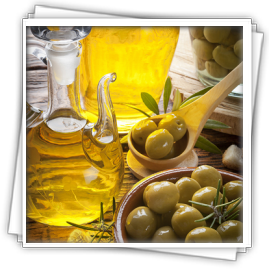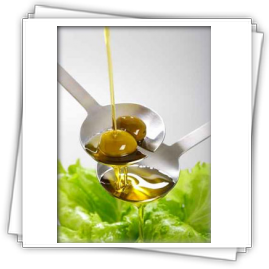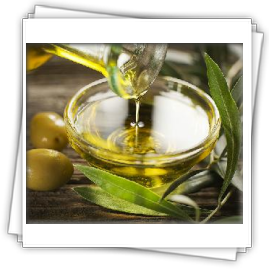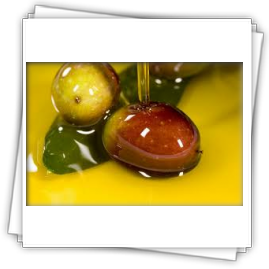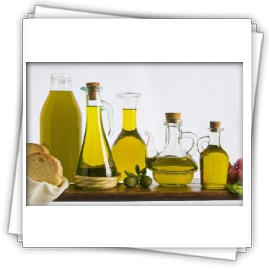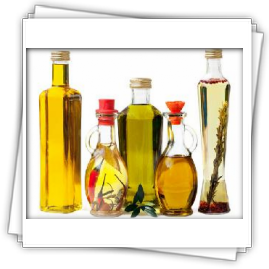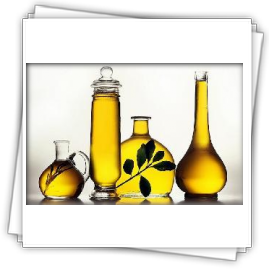Golden Olive Oil - Golden Dates - Deglet Noor Export - Bio Dates - Douz - Kebelli - TUNISIA
Main menu:
Golden Olive Oil
Products
Olive oil is obtained from the fruit of the olive tree by manual or mechanical means.
The olive oil is a product, which is natural and can be consumed as soon as the procedure of its collection has been completed.
The olive oil is a product, which is natural and can be consumed as soon as the procedure of its collection has been completed.
It is almost totally absorbed by the organism
(98%) and it gives the same number of calories as all the other natural
oils, which are 9.3 for each gram.
It comprises the basic source of fats in Mediterranean Nutrition.
The fats of vegetable origin contain more
polyunsaturated and monounsaturated fat acids and are considered healthy
since they do not contain any cholesterol.
Different types of olive oil can be found
with more or less processing such as green olive oil, organic olive oil,
and aromatic olive oil.
Tasting Notes
Here are a few tips on how to savor the bold and subtle differences among the Tunisian olive oils.
Color
Examine the color. The two most important factors
influencing the color of the finished oil are the variety of olive and
its maturity at the time of harvest. Early-picked olives yield dark,
greener oil, while ripe olives produce an oil that is lighter and more
yellow in color.
Taste
Taste the oil either by dipping a piece of white
bread into it or by drawing a teaspoonful of oil quickly into the mouth,
mixing it with air to register the sensation of all the nuances of
flavor. Between sips, cleanse the palate with a piece of crisp apple,
fresh sliced fennel or unflavored sparkling water.
Olive Oil Categories
From the fruit of the olive tree (Olea europea L.), to the exclusion of
oils obtained using solvents or re-esterification processes and of any
mixture with oils of other kinds. It is marketed according to the
designations (names) and definitions listed below:
Virgin Olive Oil
Virgin olive oil is the oil obtained from the fruit
of the olive tree solely by mechanical or other physical means under
conditions, particularly thermal conditions, that do not lead to oil
alternation, and which have not undergone any treatment other than
washing, decantation, centrifugation and filtration.
They are graded according to their organoleptic and chemical characteristics into the following categories:
Extra virgin olive oil : virgin olive oil with free acidity, expressed as oleic acid, of no more than 0,8g per 100g and the organoleptic characteristics specified for this category in the IOC trade standard.
Virgin olive oil : virgin olive oil with free acidity, expressed as oleic acid, of no more than 2g per 100g and the organoleptic characteristics specified for this category in the IOC trade standard.
Ordinary virgin olive oil: virgin olive oil with free acidity, expressed as oleic acid, of no more than 3,3g per 100g and the organoleptic characteristics specified for this category in the IOC trade standard.
Refined Olive Oil
This is the olive oil obtained from virgin olive oil by refining
methods which do not lead to alterations in the initial glyceridic
structure. Its free acidity, expressed as oleic acid, may not be more
than 0,3g per 100g.
Olive Oil
This is a blend of refined olive oil and virgin olive oil fit for
consumption. It has free acidity, expressed as oleic acid, of no more
than 1g per 100g.
Olive-Pomace Oil
This is the oil obtained by treating olive pomace with solvents
or other physical treatments, to the exclusion of oil obtained by
re-esterification processes and of any mixture with oils of other kinds.
Olive-pomace oil is a blend of refined olive-pomace oil and virgin
olive oils fit for consumption as they are; in no case can it be called
“olive oil”. It has free acidity, expressed as oleic acid, and may not
be more than 1g per 100g.


